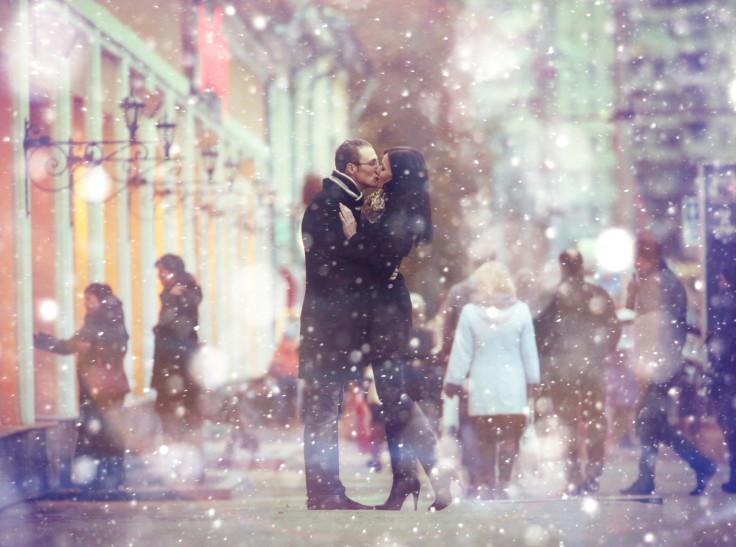NYC Blizzard Likely To Increase Fertility Rates; Watch For A Baby Boom In 9 Months

As a major snow blizzard is hitting the Northeast, millions prepare for the worst by piling up on grocery staples, backup supplies, and "quality time" with each other that could lead to a baby boom. Winter Storm Juno is predicted to bring more than 2 feet of snow and put couples in the mood to make blizzard babies.
We’ve seen it before. Nine months after Superstorm Sandy struck the coast of New Jersey and New York, hospitals began bracing for an increase in birth rates between the last few weeks of July and early August in 2013. At the time, officials at local hospitals said based on due dates, they were anticipating a 10 to 30 percent increase in births compared to the year before. Some even called it “Sandy Syndrome,” the effect forced environmental intimacy has on couples who have no electricity, complete power failure, and are left with few forms of entertainment other than themselves.
“There’s definitely an uptick,” Dr. Jacques Moritz, director of the division of gynecology at St Luke’s-Roosevelt Hospital Center, told The New York Times. “This is just old basic physiology. There’s no Internet and no cable. What else is there to do?”
The post-Sandy baby boom isn’t unique to that one disaster. Babies are conceived out of sheer boredom birthed from hurricanes, flood warnings, power outings, and blizzards. It’s a phenomenon known as the “Fertility Effect of Catastrophe,” which can be traced back to the great New York City blackout in 1965 that led to reported increases in birth rates nine months later.
In some cases there is nothing to do but wait for the storm to pass in the dark, void of distractions from text messages, social media, or television programs. It confines couples into the darkness, where prior dormant intimacy is given the chance for rebirth. Interestingly, researchers found the couples who already had one child were the ones who were having babies during major storms. Perhaps, for the first time in weeks or even months, the storm-sheltered couple has a night or a few, depending on the severity of the storm, to pay close attention to one another’s needs both physically and emotionally.
Hospitals are probably already counting the months forward to October and early November as when to brace for due time. Perhaps they’ll increase the maternity ward staff and prepare for the non-coincidental due dates to start rolling in as mothers and soon-to-be mothers find out they’re pregnant. After an ice storm struck Dallas and Fort Worth, Texas in December 2013, hospitals predicted the trend to come and prepared for the timeliness in July and August.
“It’s kind of a joke in labor and delivery,” Michelle McNinch, RN, Manager of Labor & Delivery at Medical City Dallas Hospital, told CBS News at the time, “that whenever there’s a snow storm or ice storm in Dallas, nine months later there’s going to be a lot of babies. This particular ice storm lasted days.”
Winter Storm Juno should bring enough snow to last a full three days’ worth of blizzard conditions. The Red Cross Winter Storm Safety List provides specific steps for keeping safe during the storm, and that includes to avoid leaving the house and driving on the roads. Offices will shut down in fear of employees slipping, restaurants will stop food deliveries to protect their workers, and couples will be confined to their homes with days to themselves where conception may take place.



























